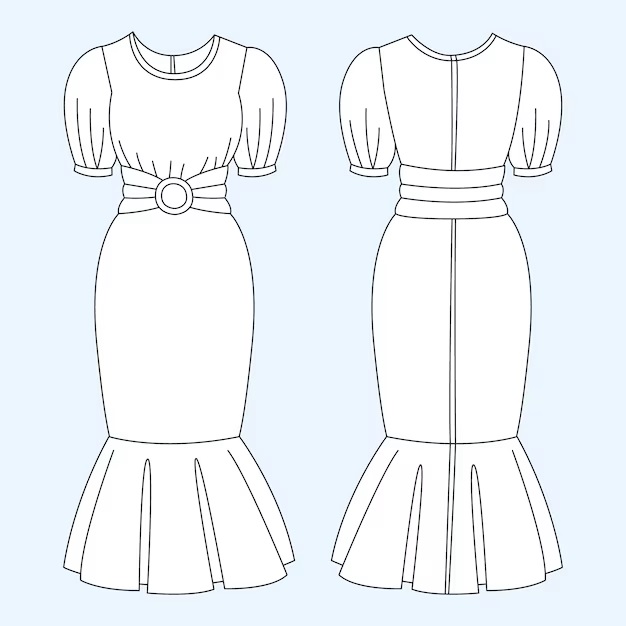How to Properly Wash Quilts for Lasting Freshness and Care
Utilize cold water and mild detergent when treating these cherished fabric pieces. Hot water can cause fading and shrinkage, so stick to cooler temperatures to preserve colors and fabrics.
Before starting the cleaning cycle, inspect for any stains. Pre-treatment with a gentle stain remover can improve outcomes significantly. Apply the remover directly on the stain and let it sit for about 15 minutes before washing.
Choose a gentle cycle on your washing machine to avoid damaging delicate stitching. If the item is exceptionally large or heavy, consider visiting a laundromat with larger machines designed for oversized bedding.
After the cycle, avoid using a dryer. Instead, lay the item flat on a clean surface or hang it to air-dry. This prevents any potential warping or damage that high heat can cause.
Once dry, give a gentle shake to restore its fluffiness. Regular cleaning can extend the life of these textiles, ensuring that they remain beautiful and cozy for years to come.
Choosing the Right Detergent for Quilts
Select a mild, liquid detergent specifically designed for delicate fabrics. Avoid powder detergents as they might not dissolve completely and can leave residues.
Recommended Types of Detergents
- Gentle formulations free from bleach and brighteners.
- Specialized products for down or feather materials, if applicable.
- Eco-friendly options that are biodegradable.
Usage Tips
- Always follow the manufacturer’s guidelines regarding detergent quantity. A small amount is usually sufficient.
- Test the detergent on a small, inconspicuous area before applying it to the entire piece.
- Consider pre-treating stains with a small amount of detergent mixed with water before laundering.
Preparing Your Quilts for Washing
Check the care label for any specific instructions regarding cleaning methods. Remove any embellishments such as buttons or patches to avoid damage. If stained, treat those areas using a gentle stain remover before proceeding.
Inspect Thoroughly
Examine the fabric for tears, fraying, or loose seams. Repair any damage to prevent further deterioration during the cleaning process. Stitch up any small holes with a needle and thread for added security.
Choose the Right Method
Decide between machine or hand cleaning based on the materials and size. For handwashing, prepare a large basin with lukewarm water and mild detergent. Ensure the detergent is suitable for delicate fabrics to maintain integrity.
For machine cleaning, use a front-loading washer if possible to minimize agitation. Set to a gentle cycle with cold water. Placing the quilt inside a mesh laundry bag can provide extra protection during washing.
Selecting the Appropriate Washing Machine Settings
Use a gentle cycle with a reduced spin speed to minimize stress on fabric fibers. Set the water temperature to cold or lukewarm, as high heat can cause shrinkage or fading of colors.
Choose a mild detergent free from bleach or additives that may irritate the fibers. Consider a detergent specifically formulated for delicate items.
For larger pieces, ensure there’s enough space in the drum to prevent bunching. Overloading can lead to uneven cleaning and potential damage.
Activate any options for extra rinse cycles. This helps to thoroughly remove any detergent residue that could accumulate in the fabric.
If your machine has a specific setting for blankets or delicate cycles, use that for optimal care. Regular cycle settings can be too harsh for intricate designs or layered materials.
Hand Washing Techniques for Delicate Quilts
Begin with filling a clean bathtub or large basin with lukewarm water, ensuring it is not too hot to avoid damaging fabric fibers. Add a suitable pH-neutral detergent at a minimal amount to prevent residue.
Gently submerge the quilt, allowing it to soak for 15-30 minutes. Use your hands to softly agitate the water, ensuring detergent distributes evenly without scrubbing. Rinse thoroughly with lukewarm water until no soap remains.
Steps for Rinsing
After washing, fill the basin once more with clean lukewarm water. Immerse the quilt again and allow it to soak briefly. Repeat this rinsing process until the water runs clear.
Drying Process
To remove excess water, carefully lift the quilt and do not wring it out. Instead, press it gently against the side of the basin. Lay the quilt flat on a clean, dry towel; roll the towel and quilt together to absorb moisture. Unroll and lay the quilt flat on a drying rack away from direct sunlight.
| Step | Description |
|---|---|
| Preparation | Fill basin with lukewarm water and add pH-neutral detergent. |
| Soaking | Submerge quilt for 15-30 minutes; agitate gently. |
| Rinsing | Rinse in clean lukewarm water until soap is fully removed. |
| Drying | Press against basin to remove excess water; lay flat to dry. |
Drying Options to Maintain Quilt Integrity
Air drying is the most reliable method to preserve the structure of a blanket. Hang it on a clothesline or lay it flat on a clean, dry surface. Ensure that it is evenly spread to avoid creases and lumps.
Tumble Drying Tips
If using a dryer, select the lowest heat setting. Place a few clean tennis balls or dryer balls inside to help maintain loft and evenly distribute warmth. Frequent checks during the cycle will prevent overheating and damage.
Avoid Direct Sunlight
Storing Quilts After Washing
Ensure complete dryness before storage. Moisture can lead to mold and mildew, damaging the fabric and filling. Consider placing the item in a well-ventilated area or using a fan to facilitate air circulation.
Choosing the Right Storage Container
Select breathable fabric bags or boxes lined with cotton. Avoid plastic, which can trap humidity and cause deterioration. If using a box, opt for acid-free materials to prevent yellowing over time.
Arrangement Techniques
Fold gently without creasing to maintain shape. Place acid-free tissue paper between layers if stacking several pieces. This technique prevents fabric from rubbing against each other and reduces wear.
Store away from direct sunlight. UV rays can fade colors and weaken fibers. Choose a cool, dry location, away from heat sources and fluctuating temperatures.
For easy access, label containers with contents. Use a simple pen on adhesive labels to identify each piece efficiently.
Avoid hanging for long periods, as this can stretch the fabric and alter the quilt’s structure. Regular checks even during storage can help identify any potential issues early.
Q&A: Washing quilts
How should you wash a quilt for the first time to avoid damaging the fabrics in your quilt or causing color bleeding?
To wash a quilt for the first time, use cold water and a gentle detergent or quilt soap in a front loading washing machine. Always include a color catcher to prevent color bleeding, especially in a new quilt with dark or saturated fabrics. Set your washing machine to a delicate cycle to minimize agitation, and allow the quilt to spread out evenly without bunching to prevent stress on the seams.
Why is it important to avoid washing an antique quilt or vintage quilt in a washing machine, even if the quilt gets dirty?
It is important to avoid washing an antique quilt or vintage quilt in a washing machine because the agitation, water saturation, and drying process can severely damage the quilt’s fragile fabrics and stitching. Instead, spot clean with a damp cloth, or consult a textile conservator for proper quilt care. These quilts may be better preserved with less washing and gentle storage methods that protect their historical and sentimental value.
What are the best practices for drying a wet quilt after machine washing to protect its structure and appearance?
After machine washing a handmade quilt, gently remove the quilt from the washer and support its weight to avoid stretching. Dry your quilt by laying it flat on a clean surface or on a drying rack, reshaping it as needed. Avoid using a high heat setting in the dryer; instead, tumble dry on low or air dry to protect the bat and fabrics. Always ensure the quilt is completely dry before storing to prevent mildew.
How often to wash a quilt depends on its usage, but what are some guidelines to keep the quilt in good condition?
How often to wash a quilt depends on how frequently it’s used—quilts used daily may need washing every few months, while display quilts require less washing. To keep the quilt in good condition, always use gentle washing instructions, avoid over-washing, and store your quilt in a cool, dry place. For quilts that get regular use, using a quilt cover can help reduce wear and extend the time between cleanings.
How can you safely wash your quilt in the washing machine without causing damage to the quilt or its stitching?
To safely wash your quilt in the washing machine, use cold water and a gentle cycle with low spin speed. Add a mild detergent and avoid bleach or harsh chemicals. Always spread out the quilt in the washer to prevent it from bunching, and include a color catcher if the quilt is new. Do not agitate the quilt aggressively, as this may cause seams to weaken or fabrics to fray.
Why should you never wash certain old quilts or antique pieces even if you want to wash them for cleaning purposes?
You should never wash certain old quilts or antique pieces because the fabrics and stitching can be extremely fragile. Putting the quilt in the water or the washer may cause irreversible damage. Instead of standard washing and drying, these quilts require special care—usually spot cleaning or professional dry clean evaluation. Preserving their integrity is more important than a full wash.
What is the best way to wash and care for a heavy quilt that you use frequently, like a star quilt or a finished quilt with thick batting?
To wash and care for a heavy quilt, use a front-loading washer with enough room to allow the quilt to move freely without stressing the seams. Use cold wash water and a gentle cycle. Avoid fabric softeners, which can leave residue. When drying, either lay the quilt flat to dry or tumble dry on low, checking often. Always ensure the quilt is completely dry before storing to avoid mildew.
When is the right time to wash a quilt that you’ve just made, and how should you clean your quilt without affecting the final result?
The right time to wash a quilt you’ve just made is after it’s fully bound and finished, especially if you used spray starch or marking tools during construction. To clean your quilt without affecting the final result, wash it in cold water using a gentle cycle and color catcher. Avoid using high heat or strong agitation, and dry the quilt in the dryer on low or air-dry it to preserve its structure.
How should I wash my quilts in cold water to avoid damage and extend their life after making the quilt?
To wash my quilts in cold water safely, I use a gentle cycle with a mild detergent specifically made for cleaning quilts. I avoid bleach and fabric softeners, and I never agitate the quilt around in the water too aggressively, as this can damage the quilt’s stitching. After the quilt is washed, I lay it flat or use a low-heat dryer setting for controlled drying time to protect the fabric and batting.
Why don’t wash instructions often advise against putting it in the washing machine if the quilt gets wet or is a first quilt?
Don’t wash instructions often advise caution because putting it in the washing machine, especially for a first quilt or one that wasn’t prewashed, can lead to fabric bleeding, shrinkage, or stitching damage. Quilts are made with care, and adding the quilt to an aggressive wash cycle can distort the shape. Instead, many quilters choose to wash the quilt gently by hand or use cold water and the delicate setting if machine washing is needed.


